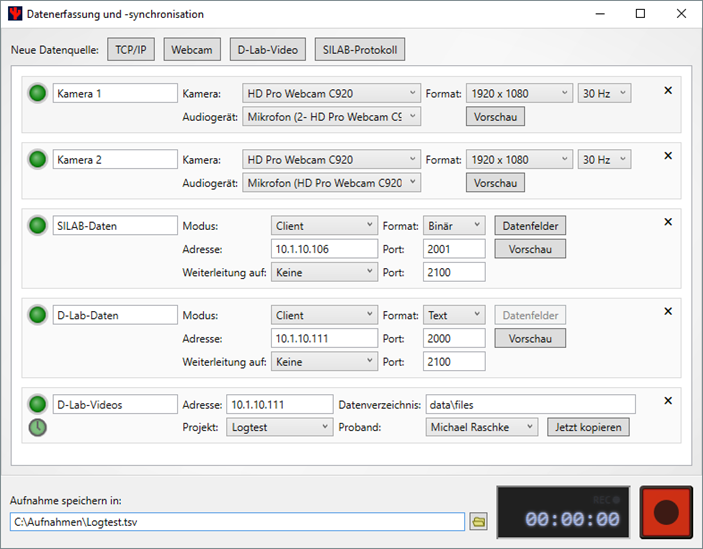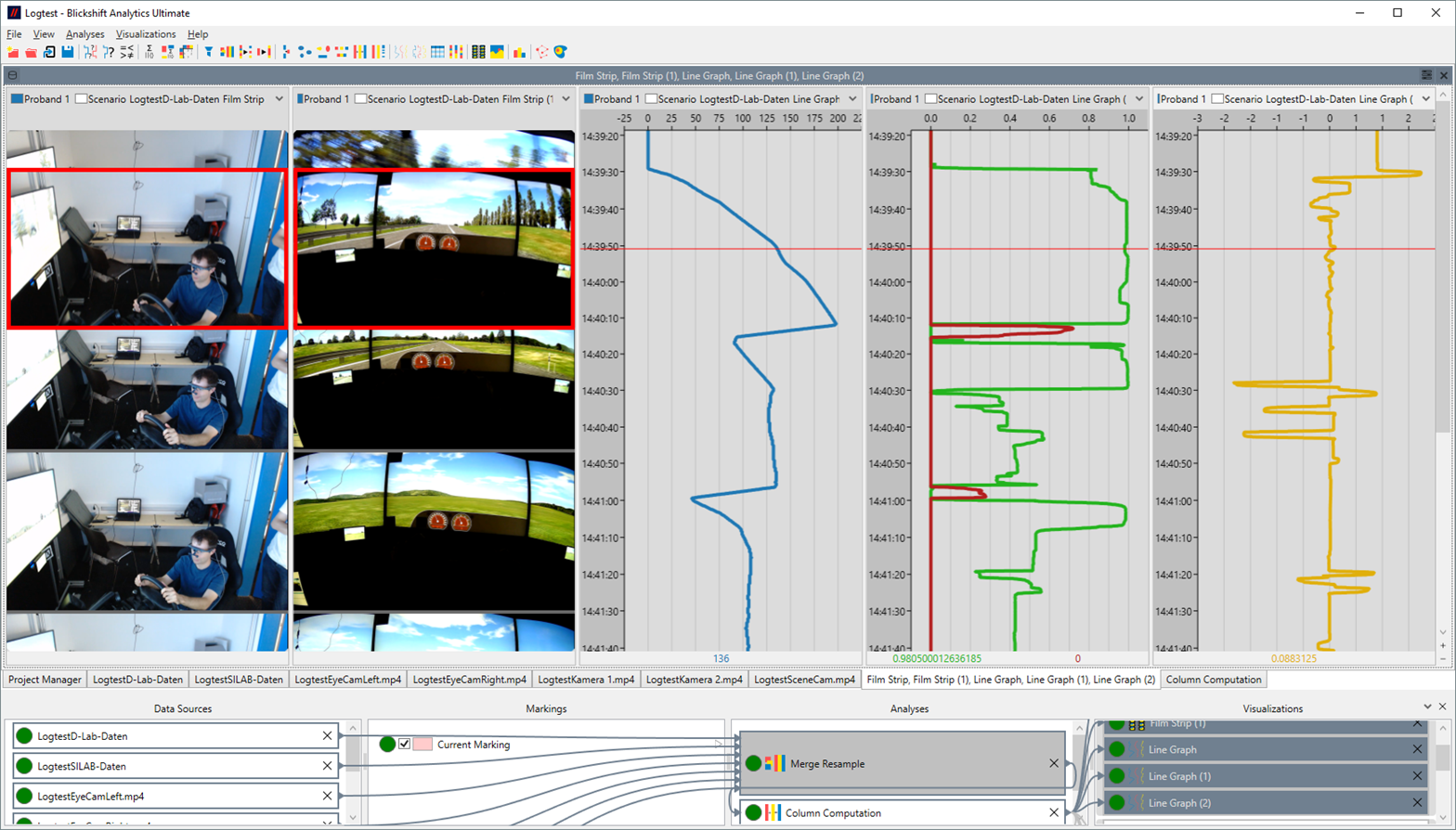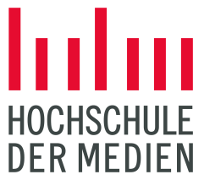Data Recording and synchronization in a driving simulator at the Hochschule der Medien
Project results: Recording and synchronization solution for a driving simulator
- Development of a software solution for a parallel recording of eye tracking data, data from a driving simulator, biometric data and several HD cameras
- Development of a software-based synchronization and mastering of the recorded data to a constant recording frequency in Blickshift Analytics
- Integration of the two software components in the existing software infrastructure and automatic clock synchronization of the used computers
In summer 2018, we have implemented a solution for recording and synchronizing data from an eye tracking sensor, driving simulator, bio metric measurement equipment and several HD cameras at the Hochschule der Medien in Stuttgart, which has the research focus on interaction design and user experience (IDUX).Shortly, the first driving studies will be performed as part of the project TANGO. Next, the driving simulator will be used together with our implemented solution in further research projects and teaching.
Our job was to develop a simple solution for the parallel recording of data streams from following systems, see Figure 1
- DIKABLIS Eye-Tracker with D-Lab 3.0
- SILAB driving simulator
- Biometric measurement with a BIOPAC equipment
- Additionally, several videos from HD cameras had to be recorded parallel
Figure 1: Overview about the infrastructure
Afterwards, the data streams of these four input devices had to be synchronized for the analysis in Blickshift Analytics. Additionally, we had to integrate the software solutions into the existing infrastructure for a system evaluation.
Because the job description has a clear specification, we have choosen a classical waterfall model for the implementation.
During the project we have implemented two main components:
- A recorder software for a parallel recording of the single data streams. This component has a simple to use user interface, which shows all important information about the state of the hardware devices in the simulator environment, see Figure 2. Using this user interface the whole recording process is controlled.
- The second component has been implemented within the Blickshift framework. After being recorded, the sync component synchronizes and samples the single data streams to a combined data stream with a constant recording frequency, see Figure 3.
Figure 2: Blickshift Sync (Recorder) for a parallel recording of a higher number of information channels.
To realize an exact synchronization as possible, the third component synchronizes all computer clocks.
Until today, the analysis of complex research questions took a lot of time for the scientists at the Hochschule der Medien. With their new solution they now can analyze even large, complex driving experiments very efficiently on a very high level of detail. An example of an analysis shows Figure 3.
Figure 3: Analysis of the recorded and synchronized data in Blickshift Analytics
Already during the implementation, the project led to a growing interest among our clients in the automotive industry and sciences. This is the reason why we have decided to develop the recording and synchronization solution further and to put it on a broader system base.
The result is our new product line Blickshift Sync. Besides the world leading eye tracking analysis software, we are now offering an efficient, easy customizable solution for recording and synchronizing data.
Client
The Stuttgart Media University is a state university of media studies in Stuttgart, Germany. The project TANGO aims at improving the user’s experience and the acceptance of automated driving functions for trucks.




